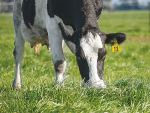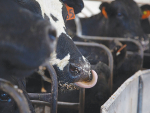Top-performing herds benefit from more cows calving in time to take advantage of the spring flush and fewer empties, meaning managers have a greater opportunity to cull underperforming cows.
Reproductive performance is not just a chance event but an area where focus and effort pays dividends. The old adage of failing to plan is simply planning to fail definitely applies here.
The two measurements that are key to benchmarking your herd’s performance are 6 – week in-calf rate and not in calf rate (empty rate).
Many would argue, that the most important of these two parameters is the 6 – week in-calf rate, because empty rates decrease as mating duration increases.
This effect of shorter mating length pushing up empty rates has been very noticeable since the banning of routine inductions more than five years ago where subfertility was masked by mating for a longer period and inducing more late calving cows.
With the majority of herds now mating for no longer than 10 – 11 weeks, it is now more important than ever for managers to be on their game and aware of all of the components contributing to a top reproductive performance. There are multiple factors to consider and failure to address them all is very risky. For example, the impact of a lease bull persistently shedding BVD entering a naïve herd after AB, would trigger a catastrophic abortion storm wiping out the 6-week in-calf rate and driving the empty rate sky high.
For this reason, investing some time into setting up a reproductive plan with a trained in-calf advisor is the first step. Advisors are trained to methodically cover all of the components contributing to reproductive performance in your herd giving you the best shot to optimise your performance.
Unfortunately, once pregnancy testing rolls around, the horse has bolted.
As a veterinarian, pregnancy testing in autumn, there is nothing pleasant about being the bearer of bad news when empty rates are high.
So, if you have not reviewed your mating plan already – now is the time to act.
This article is brought to you by J. Swap.
• Greg Jarratt is a vet and director of Matamata Veterinary Services.


















